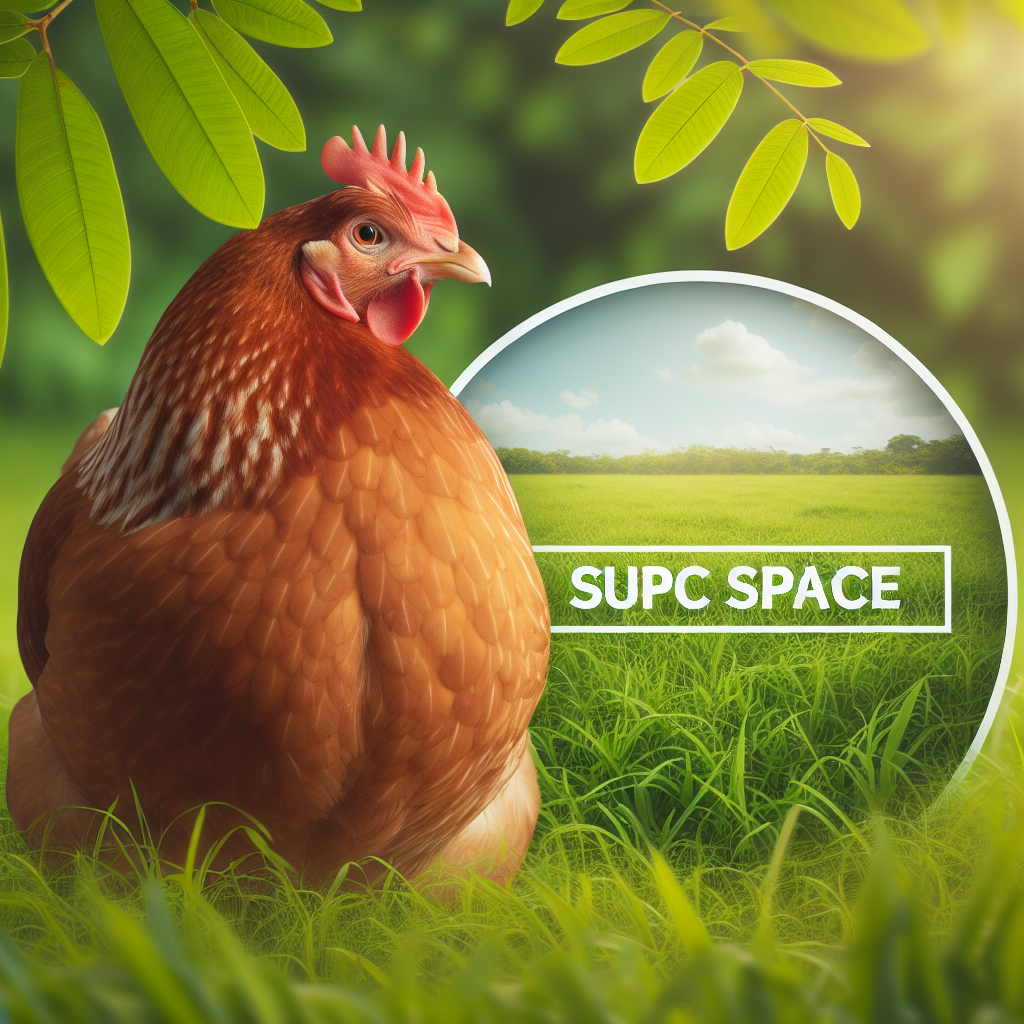As chickens grow from adorable little chicks to fully-grown adults, their space requirements undergo significant changes. Understanding these changes is crucial for poultry farmers or even backyard chicken enthusiasts to provide their feathered friends with a comfortable living environment. In this article, we will explore the fascinating journey of a chicken’s growth and discover how their need for space evolves along the way. So, get ready to learn about the surprising ways in which chickens’ housing needs transform as they grow from fluffy youngsters into majestic adult birds.
Space requirements for chicks
First week of life
During the first week of life, chicks require a small enclosure called a brooder. The brooder should provide at least 2 square feet of space per chick to allow them room to move around and exercise their growing bodies. The brooder should be lined with a suitable bedding material, such as pine shavings or straw, to keep the chicks warm and comfortable.
Second and third week of life
As chicks grow, their space requirements increase. By the second and third week of life, chicks will need approximately 4 square feet of space per chick. This additional space allows them to spread their wings, hop, and perch. It is important to monitor the temperature in the brooder and adjust accordingly to ensure the chicks remain comfortable.
Fourth and fifth week of life
By the fourth and fifth week of life, chicks will need even more space to accommodate their growing bodies. Providing approximately 6 square feet of space per chick during this stage allows them to continue to exercise, explore, and establish a pecking order within their group. The brooder should be well-ventilated to prevent overheating and allow for proper air circulation.
Sixth week of life
At around six weeks of age, chicks are reaching the stage where they can transition to a coop or outdoor space. By this point, they will need approximately 8 square feet of space per chick. This extra space allows them to continue their development and prepare for integration with older chickens. It is important to provide adequate shelter and protection from predators during this transition period.
Space requirements for pullets/hens
6-8 weeks old
As pullets and hens grow, their space requirements increase gradually. From 6 to 8 weeks old, they will need approximately 8-12 square feet of space per bird. This allows them to continue to exercise and develop their muscles. It is important to provide enough roosting space at this stage to encourage natural behaviors and promote restful sleep.
8-12 weeks old
From 8 to 12 weeks old, pullets and hens will need approximately 12-20 square feet of space per bird. This increased space allows them to explore their surroundings, scratch the ground for insects and vegetation, and establish their social hierarchy. Providing ample access to outdoor areas or runs during this stage is beneficial for their physical and mental well-being.
12-20 weeks old
Between 12 and 20 weeks old, pullets and hens require approximately 20-30 square feet of space per bird. As they approach the point of lay, their bodies continue to grow, and they become more active. This increased space allows them to engage in natural behaviors, such as dust bathing, foraging, and perching.
20-30 weeks old
From 20 to 30 weeks old, pullets and hens will need approximately 30 square feet of space per bird. This larger space requirement accommodates the increased size and activity level of mature hens. It is essential to provide an adequate number of nesting boxes during this time to encourage proper egg-laying behavior and prevent potential issues.
30+ weeks old
Once pullets and hens reach 30 weeks of age or older, they will continue to require approximately 30 square feet of space per bird. At this stage, they have reached maturity and established their pecking order. The larger space allows them to roam, forage, and engage in social interactions with their flockmates.
Breed considerations
It is important to note that space requirements may vary slightly depending on the breed of chickens. Larger breeds, such as Orpingtons or Brahmas, may require slightly more space, while bantam or smaller breeds may require slightly less. It is always best to research the specific breed you are keeping to ensure their space needs are adequately met.
Feeding and watering space
Chicks
When it comes to feeding and watering space for chicks, it is important to provide easy access to food and water at all times. Use shallow dishes or small containers that chicks can easily reach without tipping over or drowning. Place these dishes near the heat source in the brooder to encourage chicks to eat and drink regularly.
Pullets/hens
As pullets and hens grow, their feeding and watering space requirements will also increase. Provide larger feeders and waterers that can accommodate their size and allow multiple birds to access food and water simultaneously. Place these feeders and waterers in multiple locations within the coop or run to prevent overcrowding and promote equal distribution of resources.
Bedding requirements
Chicks
For chicks, proper bedding is crucial for their health and comfort. Use a suitable bedding material such as pine shavings, straw, or shredded paper. Avoid using cedar shavings, as the aromatic oil can be harmful to chicks. The bedding should be deep enough to provide insulation, absorb moisture, and prevent contact with a cold surface.
Pullets/hens
As pullets and hens grow, bedding requirements remain important for maintaining a clean and healthy living environment. Deep litter systems using materials such as straw, wood shavings, or dried leaves can be beneficial. Regularly monitoring and replacing bedding as needed helps control odors, moisture, and the spread of pests or diseases.
Roosting space
Chicks
During the first few weeks of life, chicks do not require roosting space as they are still developing their motor skills and feather growth. It is important, however, to gradually introduce roosting options as they grow older to encourage natural behavior and prepare them for adulthood.
Pullets/hens
As pullets and hens mature, it is essential to provide adequate roosting space. Allow approximately 8 inches of roosting space per bird to ensure they have enough room to perch comfortably. Install roosting bars at varying heights to accommodate their size and establish a pecking order.
Nest box requirements
Pullets/hens
Nest boxes are necessary for pullets and hens to lay eggs and create a safe, quiet environment for nesting. Provide at least one nest box for every 4-5 hens. Each nest box should measure approximately 12 by 12 inches and be filled with soft bedding such as straw or wood shavings. Regularly collect eggs from the nests to prevent broodiness and maintain cleanliness.
Outdoor space considerations
Chicks
Chicks should only be introduced to outdoor spaces once they reach around six weeks old and are fully feathered. Prior to that, they are sensitive to temperature fluctuations and need to be kept in a controlled environment. When transitioning to outdoor spaces, ensure that they are protected from predators and have access to shelter, shade, and fresh water.
Pullets/hens
Providing pullets and hens with access to outdoor spaces is important for their physical and mental well-being. A securely fenced and predator-proofed area allows them to engage in natural behaviors, such as dust bathing, foraging for insects and vegetation, and enjoying the sunlight. Monitor the outdoor space to prevent overgrazing and provide adequate shade and shelter options.
Space requirements for meat chickens
Grow-out pens
Meat chickens, also known as broilers, have specific space requirements during their grow-out phase. Typically, they are raised in large grow-out pens, allowing approximately 1 square foot of space per bird. These pens should be well-ventilated, provide easy access to food and water, and be regularly cleaned to maintain healthy living conditions.
Outdoor space
While meat chickens may not require as much space as laying hens, it is still important to provide them with access to outdoor areas. This allows them the opportunity to forage, stretch their legs, and engage in natural behaviors. Rotationally grazing the meat chickens in a secure outdoor space can provide fresh grass and minimize the impact on the ground.
Considerations for limited space
Vertical space
When space is limited, vertical space can be maximized by utilizing hanging feeders and waterers, elevated roosting areas, and nesting boxes mounted on the walls. This allows chickens to utilize the horizontal space more efficiently while still providing adequate access to necessary resources.
Outdoor runs
If an outdoor space is restricted, consider creating enclosed outdoor runs using chicken wire or similar materials. These runs can be attached to the coop and provide additional space for chickens to explore, scratch, and enjoy the outdoors safely.
Free-range vs confinement
In limited space situations, it may be necessary to confine chickens to a certain area rather than allowing them to free-range. This can be done by providing a secure outdoor run or using portable electric fencing to create rotational grazing areas. While free-range conditions are ideal, confinement can still provide a healthy and fulfilling environment for chickens when managed properly.
Potential problems with inadequate space
Health issues
Inadequate space can lead to a variety of health issues in chickens. Overcrowding increases the likelihood of respiratory infections, infestations of mites or lice, and the spread of diseases. Limited space may also inhibit physical activity, leading to obesity and related health issues. Providing sufficient space can help prevent these problems and promote overall chicken health.
Feather picking and aggression
When chickens are overcrowded or lack adequate space, they may become stressed, leading to behaviors such as feather picking and aggression. Feather picking occurs when chickens peck at each other’s feathers, causing damage and potentially leading to skin infections. Providing ample space and enrichment opportunities can alleviate stress and reduce the occurrence of these negative behaviors.
In conclusion, understanding the space requirements for chickens at different stages of life is crucial for providing a healthy and comfortable environment. From the brooder stage to fully grown adults, chickens need space to grow, exercise, and engage in natural behaviors. By providing proper space, feeding and watering areas, bedding, roosting and nesting options, outdoor access, and considering the specific needs of meat chickens or limited space situations, chicken keepers can ensure the well-being and productivity of their flock.




